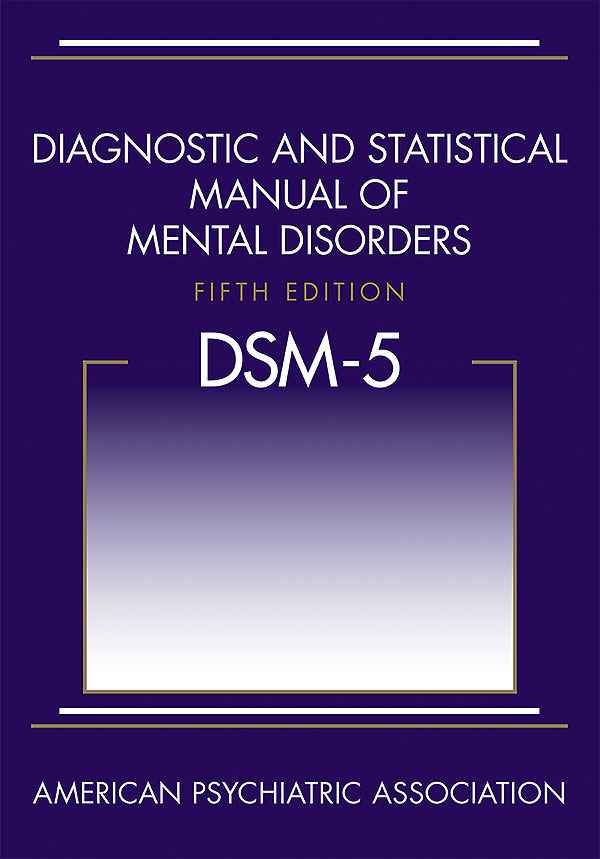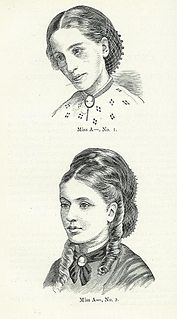An eating disorder is a mental disorder defined by abnormal eating behaviors that negatively affect a person's physical or mental health. Only one eating disorder can be diagnosed at a given time. Types of eating disorders include binge eating disorder, where the patient eats a large amount in a short period of time; anorexia nervosa, where the person has an intense fear of gaining weight and restricts food or overexercises to manage this fear; bulimia nervosa, where individuals eat a large quantity (binging) then try to rid themselves of the food (purging); pica, where the patient eats non-food items; rumination syndrome, where the patient regurgitates undigested or minimally digested food; avoidant/restrictive food intake disorder (ARFID), where people have a reduced or selective food intake due to some psychological reasons ; and a group of other specified feeding or eating disorders. Anxiety disorders, depression and substance abuse are common among people with eating disorders. These disorders do not include obesity.

Bulimia nervosa, also known as simply bulimia, is an eating disorder characterized by binge eating followed by purging, and excessive concern with body shape and weight. The aim of this activity is to expel the body of calories eaten from the binging phase of the process. Binge eating refers to eating a large amount of food in a short amount of time. Purging refers to the attempts to get rid of the food consumed. This may be done by vomiting or taking laxatives. Other efforts to lose weight may include the use of diuretics, stimulants, water fasting, or excessive exercise. Most people with bulimia are at a normal weight. The forcing of vomiting may result in thickened skin on the knuckles, breakdown of the teeth and effects on metabolic rate and caloric intake which cause thyroid dysfunction. Bulimia is frequently associated with other mental disorders such as depression, anxiety, borderline personality disorder, bipolar disorder and problems with drugs or alcohol. There is also a higher risk of suicide and self-harm. Clinical studies show a relationship between bulimia and vulnerable narcissism as caused by childhood 'parental invalidation' leading to a later need for social validation.
Orthorexia nervosa (ON) is a proposed eating disorder characterized by an excessive preoccupation with eating healthy food. The term was introduced in 1997 by American physician Steven Bratman, M.D. He suggested that some people's dietary restrictions intended to promote health may paradoxically lead to unhealthy consequences, such as social isolation, anxiety, loss of ability to eat in a natural, intuitive manner, reduced interest in the full range of other healthy human activities, and, in rare cases, severe malnutrition or even death.
Binge eating disorder (BED) is an eating disorder characterized by frequent and recurrent binge eating episodes with associated negative psychological and social problems, but without the compensatory behaviors common to bulimia nervosa, OSFED, or the binge-purge subtype of anorexia nervosa.

The Eating Attitudes Test, created by David Garner, is a widely used 26-item, standardized self-reported questionnaire of symptoms and concerns characteristic of eating disorders. The EAT is useful in assessing "eating disorder risk" in high school, college and other special risk samples such as athletes. EAT has been extremely effective in screening for anorexia nervosa in many populations.
Avoidant/restrictive food intake disorder (ARFID) is a type of eating disorder in which people eat only within an extremely narrow repertoire of foods. It is a serious mental health condition that causes the individual to restrict food intake by volume and/or variety. This avoidance may be based on appearance, smell, taste, texture, brand, presentation, fear of adverse consequences, lack of interest in food, or a past negative experience with the food, to a point that may lead to nutritional deficiencies, failure to thrive, or other negative health outcomes. The fixation is not caused by a concern for body appearance or in an attempt to lose weight.

The Diagnostic and Statistical Manual of Mental Disorders, Fifth Edition (DSM-5), is the 2013 update to the Diagnostic and Statistical Manual of Mental Disorders, the taxonomic and diagnostic tool published by the American Psychiatric Association (APA). In the United States, the DSM serves as the principal authority for psychiatric diagnoses. Treatment recommendations, as well as payment by health care providers, are often determined by DSM classifications, so the appearance of a new version has practical importance. The DSM-5 is the only DSM to use an Arabic numeral instead of a Roman numeral in its title, as well as the only living document version of a DSM.
Diabulimia, also known as ED-DMT1 in the US or T1ED in the UK, is an eating disorder in which people with type 1 diabetes deliberately give themselves less insulin than they need or stop taking it altogether for the purpose of weight loss. Diabulimia is not recognized as a formal psychiatric diagnosis in the DSM-5. Because of this, some in the medical or psychiatric communities use the phrases "disturbed eating behavior" or "disordered eating behavior" and disordered eating (DE) are quite common in medical and psychiatric literature addressing patients who have type 1 diabetes and manipulate insulin doses to control weight along with exhibiting bulimic behavior.
Purging disorder is an eating disorder characterized by the DSM-5 as self-induced vomiting, misuse of laxatives, diuretics, or enemas to forcefully evacuate matter from the body. Purging disorder differs from bulimia nervosa (BN) because individuals do not consume a large amount of food before they purge. In current diagnostic systems, purging disorder is a form of other specified feeding or eating disorder. Research indicates that purging disorder, while not rare, is not as commonly found as anorexia nervosa or bulimia nervosa. This syndrome is associated with clinically significant levels of distress, and that it appears to be distinct from bulimia nervosa on measures of hunger and ability to control food intake. Some of the signs of purging disorder are frequent trips to the bathroom directly after a meal, frequent use of laxatives, and obsession over one's appearance and weight. Other signs include swollen cheeks, popped blood vessels in the eyes, and clear teeth which are all signs of excessive vomiting.
Personality disorder not otherwise specified (PD-NOS) is a subclinical diagnostic classification for some DSM-IV Axis II personality disorders not listed in DSM-IV.
Bipolar disorder not otherwise specified (BD-NOS) is a diagnosis for bipolar disorder (BD) when it does not fall within the other established sub-types. Bipolar disorder NOS is sometimes referred to as subthreshold bipolar disorder.

Anorexia nervosa, often referred to simply as anorexia, is an eating disorder characterized by low weight, food restriction, body image disturbance, fear of gaining weight, and an overpowering desire to be thin. Anorexia is a term of Greek origin: an- and orexis, translating literally to "a loss of appetite"; the adjective nervosa indicating the functional and non-organic nature of the disorder. Anorexia nervosa was coined by Gull in 1873 but, despite literal translation, the symptom of hunger is frequently present and the pathological control of this instinct is a source of satisfaction for the patients.
The differential diagnoses of anorexia nervosa (AN) includes various types of medical and psychological conditions, which may be misdiagnosed as AN. In some cases, these conditions may be comorbid with AN because the misdiagnosis of AN is not uncommon. For example, a case of achalasia was misdiagnosed as AN and the patient spent two months confined to a psychiatric hospital. A reason for the differential diagnoses that surround AN arise mainly because, like other disorders, it is primarily, albeit defensively and adaptive for, the individual concerned. Anorexia Nervosa is a psychological disorder characterized by extremely reduced intake of food. People with aneroxia nervosa have a low self-image and consider themselves overweight.
Cognitive behavioral therapy (CBT) is derived from both the cognitive and behavioral schools of psychology and focuses on the alteration of thoughts and actions with the goal of treating various disorders. The cognitive behavioral treatment of eating disorders emphasizes on the minimization of negative thoughts about body image and the act of eating, and attempts to alter negative and harmful behaviors that are involved in and perpetuate eating disorders. It also encourages the ability to tolerate negative thoughts and feelings as well as the ability to think about food and body perception in a multi-dimensional way. The emphasis is not only placed on altering cognition, but also on tangible practices like making goals and being rewarded for meeting those goals. CBT is a “time-limited and focused approach” which means that it is important for the patients of this type of therapy to have particular issues that they want to address when they begin treatment. CBT has also proven to be one of the most effective treatments for eating disorders.
Other specified paraphilic disorder is the term used by the fifth edition of the Diagnostic and Statistical Manual of Mental Disorders (DSM-5) to refer to any of the many other paraphilic disorders that are not explicitly named in the manual. Along with unspecified paraphilic disorder, it replaced the DSM-IV-TR category paraphilia not otherwise specified (PNOS).
Eating disorders typically peak at specific periods in development, notably sensitive and transitional periods such as puberty. Feeding and eating disorders in childhood are often the result of a complex interplay of organic and non-organic factors. Medical conditions, developmental problems and temperament are all strongly correlated with feeding disorders, but important contextual features of the environment and parental behavior have also been found to influence the development of childhood eating disorders. Given the complexity of early childhood eating problems, consideration of both biological and behavioral factors is warranted for diagnosis and treatment.
Other specified feeding or eating disorder (OSFED) is a subclinical DSM-5 category that, along with unspecified feeding or eating disorder (UFED), replaces the category formerly called eating disorder not otherwise specified (EDNOS) in the DSM-IV-TR. It captures feeding disorders and eating disorders of clinical severity that do not meet diagnostic criteria for anorexia nervosa (AN), bulimia nervosa (BN), binge eating disorder (BED), avoidant/restrictive food intake disorder (ARFID), pica, or rumination disorder. OSFED includes five examples:
Other specified dissociative disorder (OSDD) is a mental health diagnosis for pathological dissociation that matches the DSM-5 criteria for a dissociative disorder, but does not fit the full criteria for any of the specifically identified subtypes, which include dissociative identity disorder, dissociative amnesia, and depersonalization/derealization disorder, and the reasons why the previous diagnoses were not met are specified. "Unspecified dissociative disorder" is given when the clinician does not give a reason. The International Statistical Classification of Diseases and Related Health Problems (ICD-10) refers to the diagnosis as "Other dissociative and conversion disorders". Under the fourth edition of the Diagnostic and Statistical Manual of Mental Disorders (DSM), it was known as "Dissociative disorder not otherwise specified" (DDNOS).
Body image disturbance (BID) is a common symptom in patients with eating disorders and is characterized by an altered perception of one's own body.
Atypical anorexia nervosa is an eating disorder in which individuals meet the qualifications for anorexia nervosa, but are not underweight. Atypical anorexia qualifies as a mental health disorder in the DSM-5, under the category Other Specified Feeding and Eating Disorders (OSFED). The characteristics of atypical anorexia patients generally do not differ significantly from anorexia nervosa patients beyond the patient's weight status.



